Developing a Sustainable Supply Chain
Info: 7843 words (31 pages) Dissertation
Published: 10th Dec 2019
Tagged: Supply ChainSustainability
Sustainable Supply Chain
Executive Summary
Usually, businesses use traditional metrics to measure the performance of their operation is the bottom line. However, the concept of triple bottom line, where social and environment impact issues are related along with the economic one, has started gaining momentum in recent days. The question that one could ask is: Are we heading to another form of Total Quality Management Techniques for products and services? Nothing is clear but the fact is that, the Triple Bottom Line holds that companies should combine their standard metrics of financial success with those that measure environmental stewardship and social justice. The concept was coined by John Elkington in 1990s. It defines the background for environmental and social impacts of business operations. It is 3PL approach, namely people, planet, and profit. In each of these dimensions, businesses are required to make decisions that encompass these three ways. It is also possible, today, to quantify the environmental impacts through the consumption of finite resources that include water quality and availability, and pollution emitted. Social impacts basically concern community health, worker safety, education quality and diversity. So why is it important for businesses to adopt such approach? Well, what one can argue about is that companies which manage to reduce these impacts on the overall corporate balance sheet will be more successful than those which have not. Because this approach can deliver greater efficiency, make them more competitive and effectively make them innovative.in all drivers of profitability.
This also draws the attention to the fact that creating responsible and sustainable supply chains that drive shared values for the local economies, environmental and business poses a greater challenge for supply chain managers on daily basis. An example of that is the collapse of the factory in Bangladesh, the gas leak in Bhopal, and business reports that are constantly filled with disturbing news of negative impacts of business activities on the society.
The root cause for many of the world’s worst societal and environmental conditions lies in failures in decision-making and in barriers to implementing improvements, including difficulties in:
- Making a business case for sustainability (according to the UN Global Compact-Accenture CEO Study on Sustainability, many programmers fail because it is too difficult to justify investment in sustainability because the business case is too difficult to quantify) – Identifying and exploiting the full range of options on sustainability initiatives, driving both value for business and society
- Ensuring compliance in global, non-transparent supply chains, particularly if there is sub-contracting through multi-stage suppliers (e.g. tier 5 suppliers)
- Taking the first move in under regulated areas because companies will face the risk of competitive disadvantage (e.g. when companies hesitate to increase wages for fear they’ll lose their pricing edge). So, what are the root cause of these backdrop?
- One of the reasons advanced by ASPIC Supply Chain Sustainability report on sustainability and the triple bottom is that “
- Many experts believe that the problems of this backdrop lie in the changing market dynamics of the increasing importance of sustainability efforts such as:
- Customers are becoming more sensitive to sustainability.3 Younger consumers demand sustainable products and practices and will pay more to get them.
- Increasingly scarce natural resources and rising commodity prices make resource efficiency and waste reduction crucial variables for companies to remain profitable.
- The regulatory environment and NGOs are pushing for more transparency when it comes to socio-economic issues. This, in turn, drives non-compliance costs and can create a backlash from the marketplace (World Economic Forum,2015).
Companies need to stop looking far beyond classic supply chain performance and embrace opportunities to provide shared values for the planet, society, and environment.
The objective of the report is to define the scope, importance and impact of sustainable supply chains. The discussion surrounding the importance and opportunities for enterprises to implements the sustainable supply chain practices have been highlighted. And finally, the study outlines a high-level roadmap for supply chain sustainability and scope -out how such roadmap could be applied to a conventional global supply chain.
Background
The interest in sustainability has grown over recent years and is shared among a variety of national and international organizations, special interest groups and corporations around the world. Sustainable business practices and as described in this paper – sustainable supply chain practices – are becoming a worldwide business requirement. Some of the main sustainability requirements have been stated explicitly by many different organizations. A widely cited definition of sustainability is attributed to the United Nations Brundtland Commission and reads as follows: “meeting the needs of the present without compromising the ability of future generations to meet their own needs” (WCED, 1987).
Another set of requirements describes the broader and more specific application of sustainability and can be seen in the ten principles of the UN Global Compact which was enacted in 1999. The ten principles establish a set of core values for organizations to follow and encourage those organizations adopting the principles to influence their partner organizations to subscribe to the principles as well. The ten principles address a set of universal issues in human rights, labor, environment and anti-corruption.
Corporate sustainability starts with a company’s value system and a principled approach to doing business. This means operating in ways that, at a minimum, meet fundamental responsibilities in the areas of human rights, labor, environment and anti-corruption. Responsible businesses enact the same values and principles wherever they have a presence, and know that good practices in one area do not offset harm in another. By incorporating the Global Compact principles into strategies, policies and procedures, and establishing a culture of integrity, companies are not only upholding their basic responsibilities to people and planet, but also setting the stage for long-term success(UNGC). Another example that is widely acknowledged is a set of guidelines for corporate social responsibility (CSR) published by the International Institute for Sustainable Development (IISD, 2007). The CSR Principles focus on the social dimension and do not align with the full scope of sustainability. The primary area of agreement between the two sets (CSR and The Ten Principles) of principles is the intersection on the environment (Monroe, W, R 2013).
The Concept of Sustainability
- Until recently, sustainability efforts have been centered around the consumer. Consumers made the choice of where and how to buy, to recycle, and how to go about recycling packaging and products at the end of their life cycle. (Frank McCarthy 2016).
- Supply chain sustainability is still a relatively new idea. Variation in levels of adoption, maturity, metrics and management differ by nation, industry and company. Within supply chains, partner relationships are often insufficiently integrated for optimal interaction. Nonetheless, supply chains designed to combine rising profit and falling customer costs, while resulting in higher living standards and lower environmental costs, are creating new best practices (ASPICS Report,2016, p – 7)
- The Brundtland report pointed out the necessity of the society to create new coordinated strategies among all the stakeholders (Simões, 2014). However, this generic definition is difficult to apply for companies because it does not provide a solution to determine the future needs (Gimenez et al., 2012). Sustainability requires corporations’ commitment to maintain the integrity of social and environmental systems while undertaking their business operations (Hutchins and Sutherland, 2008). In fact, many companies have adopted sustainable practices as a potential source of adding value, reputation building and revenue increase (Simões, 2014).
Sustainability Explained
Sustainability is a term that is used to describe how to preserve resources or maintain resources. It often associated with things like recycling, using renewable energy like solar and wind power, and preserving natural species like rainfall. Simply put, sustainability has the capacity to endure or continue. If a product or activity is sustainable, it can be reused, recycled or repeated in some form because it has not exhausted all the energy and resources that were used to create it. Sustainability can be broadly described as something that can maintain itself, such as the biological systems. Sustainabilityhas been at the center of international discussions related to trade and development for over two decades. Current explanation of sustainability aims to set any approach to society and environment degradation which allow the human society and economy to grow.
The most widely quoted definition of sustainability comes from the UN Brundtland Commission in 1997 which defines sustainability as “Creating the need of present without compromising the ability of future generation to meet their own needs” (Brundtland Report,1997). As an example of sustainability, it can be argued that in the past customers bought cola drinks that are contained in aluminum cans and after drinking them, they throwed the empty cans wherever they wanted. Today, such practice is not sustainable.
Sustainability is very often represented by three diagrams suggesting that there are three pillars of sustainability – economic viability, environmental protection, and social equality.
Figure 1

(© Image adapted from The Open University under a Creative Commons Attribution-NonCommercialShareAlike2.0Licence. http://openlearn.open.ac.uk/mod/oucontent/view.php?id=405678§ion=4)
Sustainability is becoming better defined vertically within an organization, and better defined horizontally in terms of metrics, measurements and standards globally across industries. Sustainability is becoming more integrated with other traditional supply chain operations processes due to related innovation, new technologies, new processes and stakeholder preferences. Lean management and sustainability are a natural combination, but there will be further innovation in the way service standards or supplier performance integrates with sustainability (ASPICS,2016)
Definition of Sustainability
Sustainability has been at the center of international discussions related to trade and development for over two decades. In 1987, the UnitedNations World Commission on Environment and Development (World Commission) provided what has become a widely-used definition saying sustainability is the ability of society to “[meet] the needs of the present without compromising the ability of future generations to meet their own needs.” Yet, this is not a new idea to humanity. The focus on future generations is longstanding among indigenous people of the Western Hemisphere. The Great Law of the Iroquois states, “In our every deliberation, we must consider the impact of our decisions on the next seven generations (Stenzel P L,2010).
In practice, supply chain sustainability interacts with almost every supply chain component, whether in simple or complex supply chains. Supply chain sustainability practice should be a consideration in decisions involving strategy, tactics, goals, processes, trade-offs and outcomes in all levels of supply chain management. In fact, senior management is by far the best single influence to supply chain sustainability practice. The customer is the second largest influence, and employees are the third largest influence. Triple bottom line sustainability may intersect with risk or strategy practice in addressing long-term uncertainty in the availability of people, markets and resources necessary for lasting business success (ASPCS,20116).
The objective of supply chain sustainability is to create, protect and grow long-term environmental, social and economic value for all stakeholders involved in bringing products and services to market. Through supply chain sustainability, companies protect the long- term viability of their business and secure a social license to operate (UNGC,2010).
At every stage in the life-cycle of specific products there are social and environmental impacts, or externalities, on the environment and on people. In addition, governance, or the accountability of organizations to their stakeholders for their conduct, is important at every stage throughout the supply chains
Key Drivers of Sustainability
Competition for Resources
The world’s population is projected to increase to more than 9 billion people by 2050. Rising living standards will result in both expanded markets for goods and services and unprecedented demands on the planet’s natural resources.
Climate Change
Our current fossil-fuel based economy has led to a growing concentration of greenhouse gases in the atmosphere that is driving more extreme weather events, more severe and frequent cycles of drought and flood, and rising sea levels
Economic Globalization
The integration of national economies into the global economy brings opportunities for business, but often with significant risks.
Connectivity and Communications
Advances in digital communication over the last two decades have reduced not only the time it takes to build a reputation, but also the time it takes to destroy one. y Drivers of Sustainability (Dr Frank McCarthy 2016 All rights reserved)
The importance of Supply Chain Sustainability
According to The Supply Chain Sustainability Book: A Practical Guide for Continuous Improvement (2010), “there are numerous reasons why a supply chain starts sustainability journey, primary among them is the compliance with laws and regulations and adhere to and support international principles for sustainability conduct. In addition, companies are increasingly taking actions that result in better social, economic, and environmental impacts because the business benefits to doing so. By managing and seeking to improve environmental, social, and economic performance and good governance throughout supply chains, companies act on their own interests and the interest of their stakeholders and the interests of the society large. By implementing supply chain sustainability programmes, companies engage with both direct and sub-tier suppliers, mainstreaming values and actions down to raw material producers and maximizing the overall social, environmental and ethical impact” (UNGC,2010).
Every Sustainability Issues Encompass also Supply Chain Dimension.
The definition of sustainability encompasses the role of business that addresses the environmental, social (human rights) and corporate governance issues as they are covered in the Ten Principles of UN Global Compact. These principles of UNGC and supply chain sustainability are described as follows:
Human Rights
Principle1: Business should support and respect the rights internationally human rights and
Principle2: businesses should ensure that they are not complicit in the human rights abuses
Labour
Principle 3: businesses should uphold the freedom of association and the effective recognition of the right to collective bargaining
Principles 4: the elimination of all forms of forced and compulsory labour;
Principle 5: the effective abolition of child labour; and
Principle 6: the elimination of discrimination in respect of employment and occupation
Environment
Principle 7: Businesses should support a precautionary approach to environmental challenges;
Principle 8: undertake initiatives to promote greater environmental responsibility; and
Principle 9: encourage the development and diffusion of environmentally friendly technologies.
Anti-Corruption
Principle 10: Businesses should work against corruption in all its forms, including extortion and bribery (UNGC,2015, p-11)
Figure 2 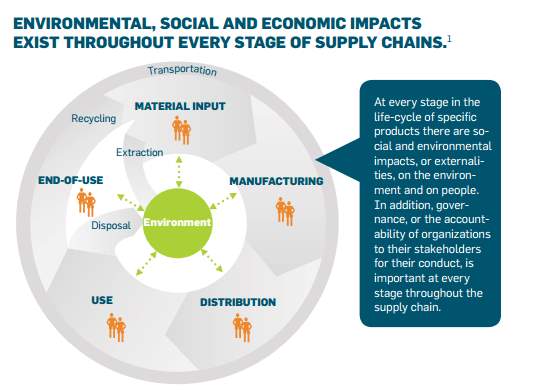 Source:(INSTEAD,2017).
Source:(INSTEAD,2017).
Environmental, social and economic impacts exist throughout every stage of the supply chains, from transportation to material input and recycling, to extraction and end-of -use to manufacturing and disposal, to environmental use and distribution (Ibid).
Figure 3 The Link between Supply Chain Sustainability and Total Business Value

The connection between supply chain sustainability—generally perceived as a cost center in companies—and the total value of the business can seem weak. However, as depicted in Figure 3, it makes sense to understand the value of supply chain sustainability approaches through the impact they can have on value creation levers such as pricing power, cost savings, and market share. Such impacts may be significant. Further, while the business benefits that suppliers accrue through improved sustainability performance often aren’t passed directly to buyers, buyers may benefit through increased stability of supply and quality (BSR,2010).
Sustainability and SCM/Logistics Managements
Supply chain sustainability (SCS) is a holistic view of supply chain processes and technologies that addresses the environmental, social and legal aspects of a supply chain’s components as well as their economic factors. SCS is based on the principle that socially responsible products and practices are not only good for planet Earth and the people who live here, they are also good for building positive brand awareness, lowering risk and improving long-term profitability (Rouse, M 2017).
Sustainable Logistics and Supply Chain Management examines all the key areas in sustainable logistics and supply chain management, including: sustainable product design and packaging; sustainable purchasing and procurement; environmental impact of freight transport; sustainable warehousing and storage; and much more (Grant, B.D et al,2017)
Example of SCM/logistic Activities and its Effects on Supply Chain Sustainability
If people from the northern countries like Europe or Canada want to have cotton clothing or other goods, some form of logistic activity such as transportation and warehousing will be needed to transport the cotton or products to the desired markets. However, the main logistical supply chain issue is whether the cotton should be in the form of raw materials or finished goods. The answer will depend on a logistical system and the supply chain. Abukhader and Jonson (2004), assert that “there are three themes regarding sustainable or green logistic or green supply chain management”
- reverse logistic;
- Assessment of emissions;
- The greening of logistic activities and supply chains (Abu Khader and Jonson,2006)
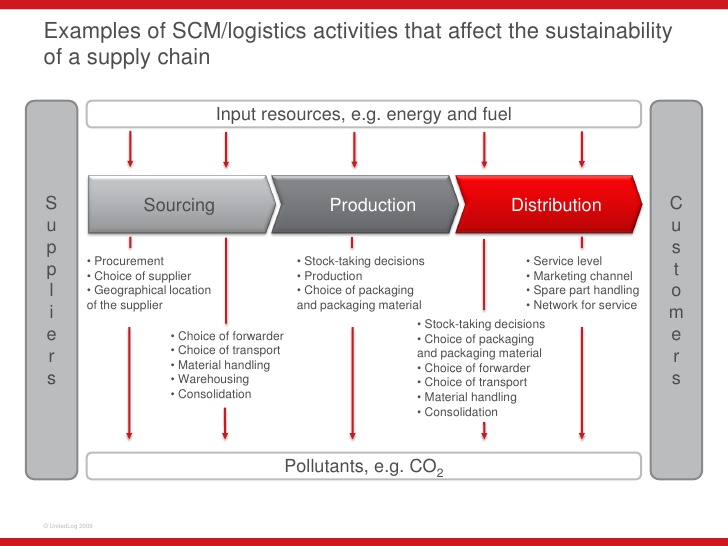 SCM/logistic supply chain is an integrated part of supply chain management that plans, implements, and controls the efficient, effective forward reverse flow and storage of goods, services and related information between of origin and the point of consumption in order to meet customer’s requirements (Grant, B.D,2017)
SCM/logistic supply chain is an integrated part of supply chain management that plans, implements, and controls the efficient, effective forward reverse flow and storage of goods, services and related information between of origin and the point of consumption in order to meet customer’s requirements (Grant, B.D,2017)
The point of origin has previously been between point A and B from company’s perspective. Today companies employ more of a life cycle perspective (Dr Frank McCarthy 2016).
SCM/logistic supply chain is explicitly about managing the environmental and social impacts of supply chain logistics activities in the efficient and effective movement and storage of goods between the point of origins and destinations or back again (Smart Step,2009).
What is Changing?
- The emphasize has shifted from the green consumer to the responsible whereby retailers/service providers and the brand owner assume responsibility for ensuring that consumers can buy products and services with confidence in their source and manufacture.
- Similarly, the relationship between manufacturers and retailers have shifted. In the past manufacturers were the drivers with the supply chain. managing the pace at which products were manufactured and distributed. Today it is the retailer that drive the agenda and successful manufacturers are those who can meet customer demands for options, styles or features (NZBCSD,2003).
Benefits
In 2008, the New York State Prevention and Pollution Institute (NYSP2I) reported that the benefits of a supply chain sustainability are highlighted as reduced carbon footprint reduced energy, and resources. However, the benefits are much greater than those associated with the logistic and transportation as the segment of the supply chain. It is recommended that companies need to consider the sustainability issues in their supply chains for the following additional reasons:
- Corporate customers are requiring suppliers to adhere to sustainable practices to continue to conduct business together. A recent study from the Carbon Trust, a non-profit organization, shows that 40% of multinational company’s plan drop suppliers based on low carbon performance
- Improved bottom line – the financial results.
- Consumers and Wall Street recognize the importance of green practices and sustainability – which more and more drivers increased sales and share valuation. A study by Mercer, an investor company’s best way for financial investors to manage portfolio risk associated with climate change may be to shift 40% of the portfolio in climate sensitive asset – with an emphasis on those that can adopt some low carbon environments
- Tax and investment incentives from US government and other countries are being provided to companies with sustainable efforts
- Companies that can identify and implement sustainable supply chain practices experience positive public relations due to being perceived as a good global which can yield great benefits (NYSP2I,2008).
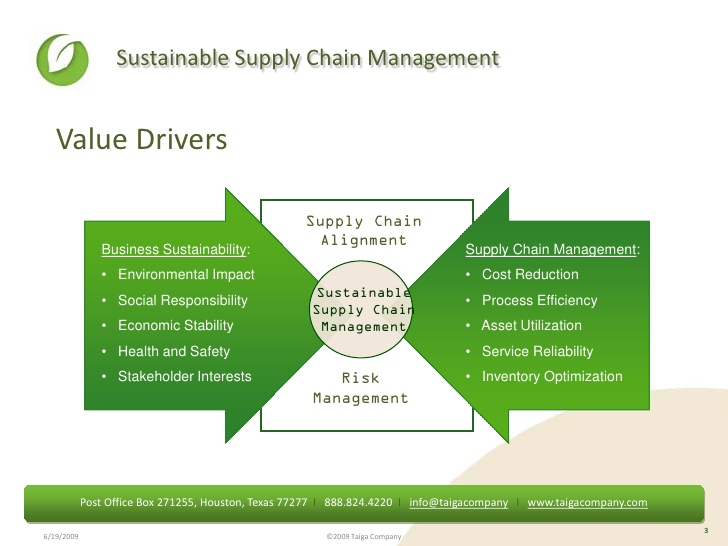
Sustainability Concerns in Global Supply Chains
- Economic goals in SCs: Cost, quality, speed of delivery, flexibility, resource utilization, visibility and innovativeness (Chan, 2003; and Gunasekaran et al, 2001).
- Social issues: respect of human and workers’ rights – child labour, bonded labour, health and safety, working conditions, gender equality and poverty alleviation (Maignan et al, 2002)
- Environmental problems: pollution, climate change; decline in ecosystems & biodiversity; deforestation; soil degradation; resource depletion and fresh water crisis (McAllister et al, 2005).
Sustainability and the Triple Bottom Line
A growing number of publications focus almost exclusively on the environmental aspects. Green supply chain management focuses on environmental aspects across every element of the supply chain (Monroe, W.R,2013).
The book of Emmett and Sood (2010) provides a discussion and case study analysis of green product design, responsible resources. Carter and Easton (2011) conducted a more extensive literature review on 20 years of sustainability supply chain management research. Environmental concerns are at the forefront other articles such as environmentally responsible (Ellram et al,2012)
The objective of sustainability is to meet the goals of the triple bottom and one way to look at it is through the lens of – economic- social- and environmental dimensions. There has been an abundance of research papers that deal with environmental aspects. However, this section provides an example of literature that explore the other aspect of the triple bottom line and indicate how it can be addressed in comprehensive way.
Comprehensive Approach of Sustainability and the Triple Bottom Line
Bolstorff and Rosembaum (2007), from the supply chain operational council (SCOR Model) provided a comprehensive view of the major elements of a sustainable supply chain. The following framework depicts the different elements of supply chain in this manner. It discusses and evaluates all possible sustainability elements that can be somehow easy to see. The model states the elements which then prompts the necessary thought and questioning to identify sustainability issues that might otherwise be overlooked (if using LCA or EIA)
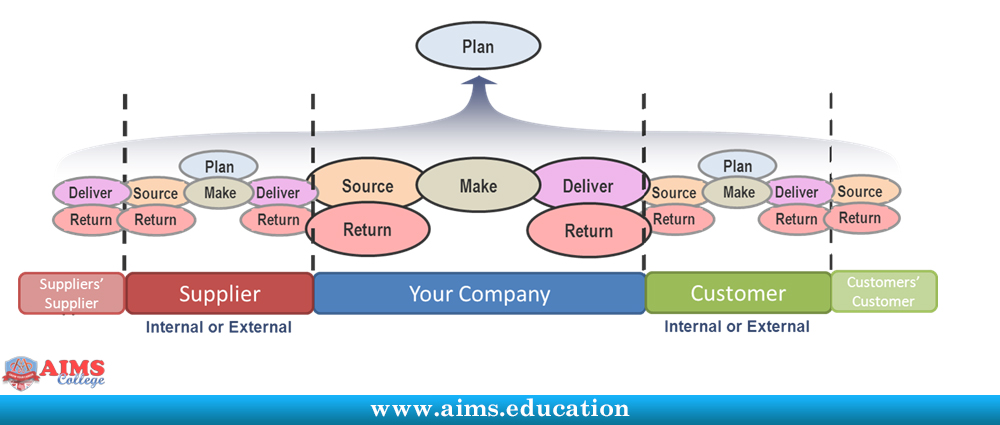
SCOR Model provides five terms that describe Plan, Source, Make, Deliver, and Return in sequential and logical order of events that occur in the supply chains.
Plan
These are sustainability principles that can be used to set a guiding principle in the planning stage for the company’s supply chain. The environment, economic, and social aspects in the planning issues should be considered.
Source
These are principles of sustainability that provide guidance for company to make of when it will make the sourcing decisions. These include selection of suppliers, insourcing, developing supplier as a strategic partner, choosing local vs there is a supplier that can meet the company’s sustainability requirements better than the original options. The entire triple bottom line is considered in the process. Explicitly during the making decision.
Make
All statements that involve sustainability involving manufacturing must apply here. Recovering, reuse, and recycling the materials used in the manufacturing process are the primary approaches for using the resources in a responsible way, consistent sustainability norms. The company’s positions on sustainability be developed which include, environmental, economic, and social consideration and explicit policies to address the triple bottom line.
Deliver
Throughout the global supply chain, there are multiple transportation elements and multiple handoffs (Russell and Saldanha,2003). Transportation is a major concern about emissions and the related environmental impact. The multiple listing of plan, source, make, deliver, and return across the SCOR diagram reinforce the idea that the intermodal/product will be transported many times (Monroe,2013).
An example of this segment is the Intermodal transport which translates the benefits in each of the areas for the triple bottom line. Tyssen et al. (2011) describe two case studies where decisions involving intermodal terminals resulted in benefits that are seen in each category – economic, environmental and social. Transportation (Tysen et al,2011).
Return
The reverse logistics is the stage of the supply chain process that applies to a range of material that have been employed in the products themselves or the packaging and shipping materials that are used at different phases in the supply chain. Return may refer to the product, used components parts, packaging, or even reusable or recyclable shipping materials. The economic benefits here will manifest as cost savings and in some cases new revenue streams. While the environmental and economic benefits are at the forefront, additional probing should be used to identify social benefits as well. Most will agree that responsible use of resources is also beneficial to society in the long run(Ibid)
Sustainability – Life Cycle Assessment (LCA)
The ISO 14040 standard defines LCA as a compilation and evaluation of the inputs and outputs and the potential environmental impacts of a product system through its life cycle (© BiGFLO Srl, Italy).
Life Cycle Assessment(LCA) involves cradle-to-grave analyses of production systems and provides a comprehensive evaluation of all upstream and downstream energy inputs and multimedia environmental emissions (Research Triangle Institute,2016).
Categories and Scales of Analysis
Deterioration of ecosystems
Greenhouse effects, Acidification Eutrophication, and Ecotoxicity
Direct Impacts on Human Health
Human Toxicity, Ozone depletion Summer Smog and Winter Smog
Resources depletion
Depletion of non-renewable resources and depletion of renewable raw material
Global Warning – Gases are water vapor (H2O) carbon dioxide (CO2), methane (CH2) nitrous oxide (NO2), and Chlorofluorocarbon (CFCs) (© BiGFLO Srl, Italy)
Sustainability – Ecological footprint
In their book entitled “Our Ecological Footprint: Reducing Human Impact on the Earth,” Wackernagel and Rees (1998) define “Ecological Footprint as an accounting tool that enables us to estimate the resources consumption and the assimilation requirements of defined human population or economy in terms of a corresponding productive area.”
They argue that our ecological footprint keeps growing while our per capita “Earth Share,” continue to shrink. Since the beginning of this century, the available ecologically productive land has decreased from over five hectares to less than 1.5 hectares per person in 1995. At the same time, the average North American’s Footprint has grown to over 4 hectares. These opposing trends are in fundamental conflict: the ecological demands of average citizen in the rich countries exceed per capita supply by a factor of three. This means the world could not support even today’s world population of 7 billion sustainably at the North America material standards (Wackernagel and Rees,1998, p-14).
Sustainability – Carbon Footprint
Carbon Footprint is defined as the green gases (GHGs) CO2, methane,
nitrous oxide, and fluoride emitted in production of goods and services used for final consumption and GHGs emissions occurring during the consumption activities themselves, akin in the tier CF in the Green Gas Protocol (Matthews, H.et al,2008).The concept of a carbon footprint captures the interest of businesses, consumers, and policy makers alike (Lash, J.;Wellington, F.2007) It is most appropriately calculated using the Life Cycle Assessment or Input-Output Analysis (Matthews et al,2008 and Weideman et al,2008).
Ayres and Kneese (Ayres, R. U and Kneese, A. V, 1969) have pointed out that GHG emissions are an integral part of our system of production and consumption and have provided an overall intellectual framework of addressing this connection. What is now called footprint analysis goes back to the net energy analysis and the concept of “the energy cost of living” developed in the 1970s (Herendeen, R. A .and Tanaka,J, 1976). There has been a resurgence of interest in household environmental impacts (Hertwich, E. G,2005 and Reinders, A .et al,2003) and integrated product policy (Tukker, A et al,2006), but there have been few studies that quantify the impacts of government services or investments (Lenzen, M,2001). The carbon intensity of different economies varies substantially (Metz, B et al,2007), but lacking comparable international data most studies apply the “import assumption” of identical carbon intensities of imported and domestic products (Lenzen, M.A 2007).
The Ranking Systems
According to Eco-Friendly Report (2015), in 2008 The Future Laboratory produced a ranking system for the different levels of sustainability being achieved by organization.” It is asserted that there are three tiers of sustainability for better and more eco-friendly practices, as a company grows in sustainability, it moves up through the tiers and sustainability becomes more integrated (Eco-Friendly,2015).
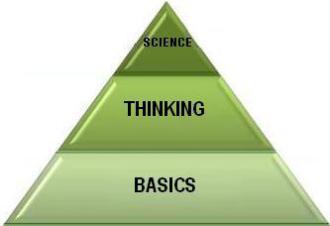
Getting the Basics Right – This is basically about taking the first step to become more sustainable and it is based on enacting policies that show employees may have probably used in their home or in their offices. This simple course of action starts by turning lights and computers off when they are not in use. Using recycling papers or more eco-friendly methods such as travelling by bikes, carpooling and public transport can help reduce footprint.
Learning to Think Sustainably – This is the second stage of the process and it allows employees to expand and demonstrate practical understanding of to their business infrastructure. At this point, companies can assess their impact across a variety of operations and introduce some changes in their supply chain management, such as supplier management, product design, manufacturing rationalization and distribution optimization.
The Science of Sustainability – The third and last level is about going beyond observable into full scale of audit of how things are run and how they can be run by creating a balance between environmental, social and economic factors through a new way to proceed in a new supply chain strategy. This green improvement is a long-term plan which involves auditing and benchmarking to provide a framework for sustainable governing supply chain operations. All of this is to consider agility, flexibility and cost in the supply chain (Eco-Friendly Report,2015).
Analysing SSCM & Competitive Advantage
To achieve competitive advantage, resources and/ or capabilities generated through SSCM must be:
- Valuable: respond to threats and opportunities.
- Rare: Controlled by a few competing firms.
- Imitate: Costly for rivals to reproduce.
- Organisation’s policies and procedures should support exploitation of the above three. (Barney, 2007)
The Triple Bottom Line – “TBL “3BL”
 Ecological Footprint
Ecological Footprint


India/1 Acre
(Dr Frank McCarthy 2016 All rights reserved)
The TBL
The Triple Bottom Line (TBL) consists of three Ps: profit, people and planet. It aims to measure the financial, social and environmental performance of the operation over a period. (The Economist,2009). It goes beyond the traditional financial aspects and reveals an organization’s impact on the world around it (Global Reporting Intiative,2006). The TBL is a concerted effort that incorporate economic, social and environmental dimension into a company’s evaluation and decision-making processes (Wang and Lin,2007:2).
Triple Bottom Line Accounting & Reporting
The Triple Bottom Line Accounting Reporting is an “accounting for environmental, social and economic performance.” It includes:
- Triple Bottom Reporting is Voluntary
- Financial Reporting is Required by SEC
- Environmental Reporting Required under Environmental Regulations
Framework for Triple Bottom Line Accounting Reporting
Global Initiative Reporting
Environment
Performance Indicators
- Materials
- Energy
- Water
- Biodiversity
- Emissions
- Products and Services
- Compliance and Transportation
Society
Performance indicators
- Community
- Corruption
- Public Policy
- Anti – competitive behaviour
- Compliance
- Non-discrimination
- Freedom of Association
- Public policy
- Investment and Procurement practices
- Employment
Economic
Performance Indicators
- Consumer health and safety
- Products and Services Labelling
- Marketing communication
- Customer privacy
- Compliance
(Musikanski, L 2008)
TBL Reporting and GRI
The World Commission provides a conceptually a helpful definition of sustainability but lacks specificity. The Triple Bottom Line provides a starting point for developing ways to identify and monitor actions that can contribute to the three facets of sustainability: economy, social, equity, and environment (Stenzel, L.P,2010).
GRI was developed by Ceres, a Boston-based non-profit program in conjunction with United Nations Environmental Programme to provides criteria to measure the Triple Bottom Line.
“GRI puts the Triple Bottom Line into format that promotes “Clarity, accuracy, usefulness and influence.”
It enables “an organization to manage its overall impact on the [Triple Bottom Line] as it can improve quality, transparency of sustainability reporting and provide reasonable and balanced presentation of performance.” (Ibid)
Corporate & Social Responsibility and TBL
The Triple Bottom line argues for:
- Businesses to measure their success in accordance of the three sustainability dimensions – people, planet and profits (Elkington, 1998)
- Companies to evaluate their performance in each category that represent their perceived commitment to their stakeholders, the natural environment and their economic profits
- CRS on its whole is sometimes to be philanthropic as opposed to obligatory. However, one deterrent is that standardization is a voluntary undertaking and some companies are not required by law to use and implement standards in their operations and many may not (Dixon. T, 2014: p – 11).
- By voluntary implement standards into their operations, companies can show their alignment with the international community in terms of their regard to environment and their commitment to acting with care (Ibid)
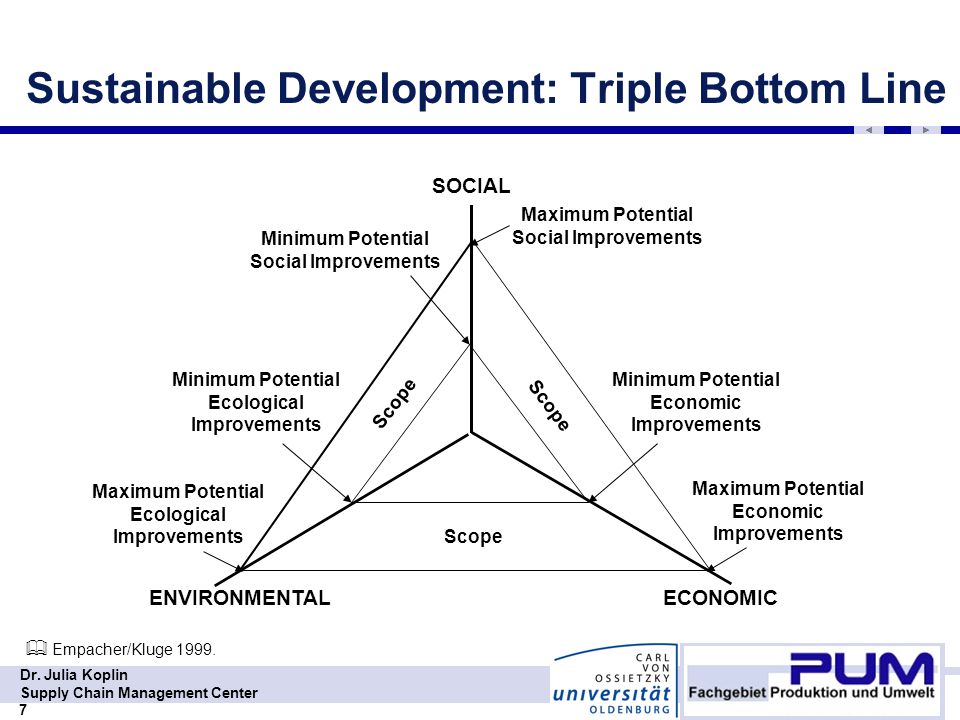
Environmental and Social Standards

(Dr Frank McCarthy 2016 All rights reserved)
Integrate Sustainability into SC processes
- Product design.
- Manufacturing by-products.
- By-products produced during product use.
- Product life extension.
- Product end-of-life.
- Recovery processes at end-of-life.
(Linton et al, 2007)
Businesses employ various strategies to integrate sustainability into the SC.

Reactive Defensive Accommodative Proactive
Proactive Strategies
- Define sustainability goals.
- Educate suppliers.
- Sanction suppliers.
- Designate organisational member in charge.
- Monitor Suppliers.
- Communicate achievements to stakeholders.
- Receive stakeholder feedback
(Maignan et al,2002)
Framework for Integrating Sustainability into the SC (Pagell and Wu, 2009)
- Innovation capability.
- Positive management orientation.
- Reconceptualise SC members.
- Collaborate with non-traditional SC members.
- Supplier continuity is an important outcome.
- SC performs well on traditional metrics.
- Institute measurement and reward system
Model for Integrating Sustainability into the SC (Pagell and Wu, 2009)
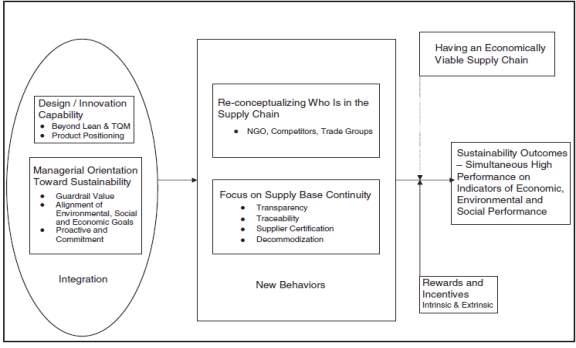
Implications for Supply Chains
- Way forward is proactive SSCM strategy.
- Firms and suppliers should adopt and implement voluntary codes of conduct (Doh, 2005)
- Establish long-term relationships, certification and building capabilities of SMEs.
- Voluntary initiatives filling regulatory vacuum in developing countries (Frenkel, 2001)
- Enhance buyers’ ability to influence sustainable supply chain practices (Bowen et al, 2001)
Benefits and Challenges for Integrating Sustainability into the SC
Benefits
- Stimulates innovation and builds new capabilities – e.g. Patagonia’s quest for recycled inputs led to new product development.
- Market positioning and firm-customer bonding – e.g. the Dutch coffee brand Max Havelaar; and Ford and General Motors encouraging minority suppliers.
- Increase sales, revenues and profits – E.g. Coca-Cola
- Positive publicity and good corporate reputation – e.g. McDonald’s, Wal-Mart.
- Greater organisational and employee commitment when properly communicated – e.g. Patagonia, McDonald’s.
(Maignan et al, 2002; Markley and Davis, 2007)
Challenges
- Insufficient dedication to sustainable development (MDGs Report, 2010).
- Lack of top management commitment and resources (Maignan et al, 2002; Min and Galle, 2001).
- Inadequate expertise.
- Strong emphasis on efficiency and governance of supply relationships rather than environmental and social sustainability (Maignan et al, 2002).
- Reactive and firefighting culture (Preuss, 2001)
- Effectively implement rather than end at senior management goals (Preuss, 2001)
- High costs; complexity of and insufficient communication in supply chains (Seuring and Muller, 2008).
- Green washing and poor supplier commitment (Greer and Bruno, 1996; and Wycherley, 1999)
- Small firms have limited resources and low response rate to supply chain pressures (Kempe and Soete, 1992; Walley and Whitehead, 2004; Hill, 1997).
Conclusion
There has been a growing interest in sustainability over the recent years and it is shared among a variety of national and international organisations, Sustainability focuses on the ability of the society to meet the needs of the present without compromising the ability of the future generation to meet their own needs.
In practice, sustainability is incorporated in supply chain operations, either simple or complex. Supply chain sustainability in practice should give consideration in decisions involving strategies, tactics, goals, processes, trade-offs and outcomes in all its levers of management.
Companies have multiple reasons for embracing the path of sustainability. Among them are the compliance with law and policies. They adhere to support the international principles for sustainability content. Sustainability issues encompass supply chain dimensions.
The link between sustainability supply chain is generally viewed as a cost in a company and the total value of the business. However, supply chain sustainability approaches can have a tremendous impact on the value creation levers such as pricing, costing, saving and market share.
SCOR Model was used as a framework to identify sustainability supply chain elements and their implications for organisations.
Companies that follow the guiding principles of UN Global Compact will realise economic benefits such as cost saving and revenue streams. Additional probing is needed to identify several benefits as well.
Supply chain practices can be perceived as the biggest challenges for improving sustainability performance.
Integrating supply, the UN Global Compact Principles into the supply chain can challenging because of the scale and complexity of many supply chains
Companies need to take sustainability as one of their top priorities in their organisations
Cite This Work
To export a reference to this article please select a referencing stye below:
Related Services
View allRelated Content
All TagsContent relating to: "Sustainability"
Sustainability generally relates to humanity living in a way that is not damaging to the environment, ensuring harmony between civilisation and the Earth's biosphere.
Related Articles
DMCA / Removal Request
If you are the original writer of this dissertation and no longer wish to have your work published on the UKDiss.com website then please:





